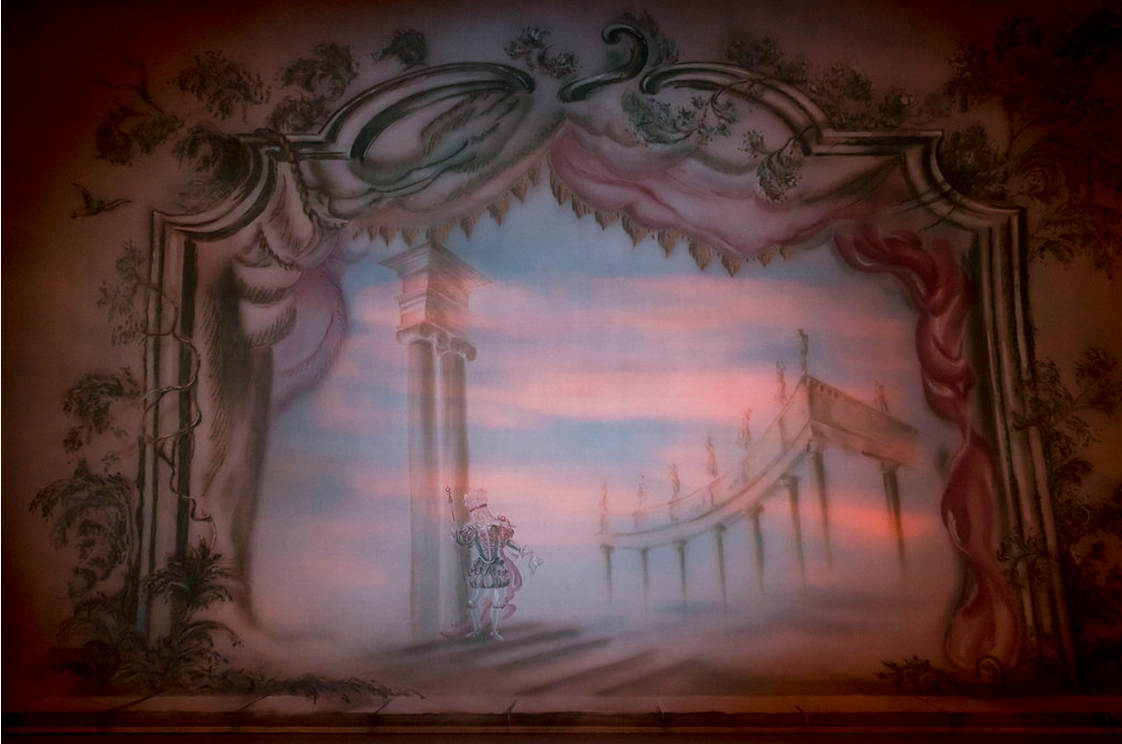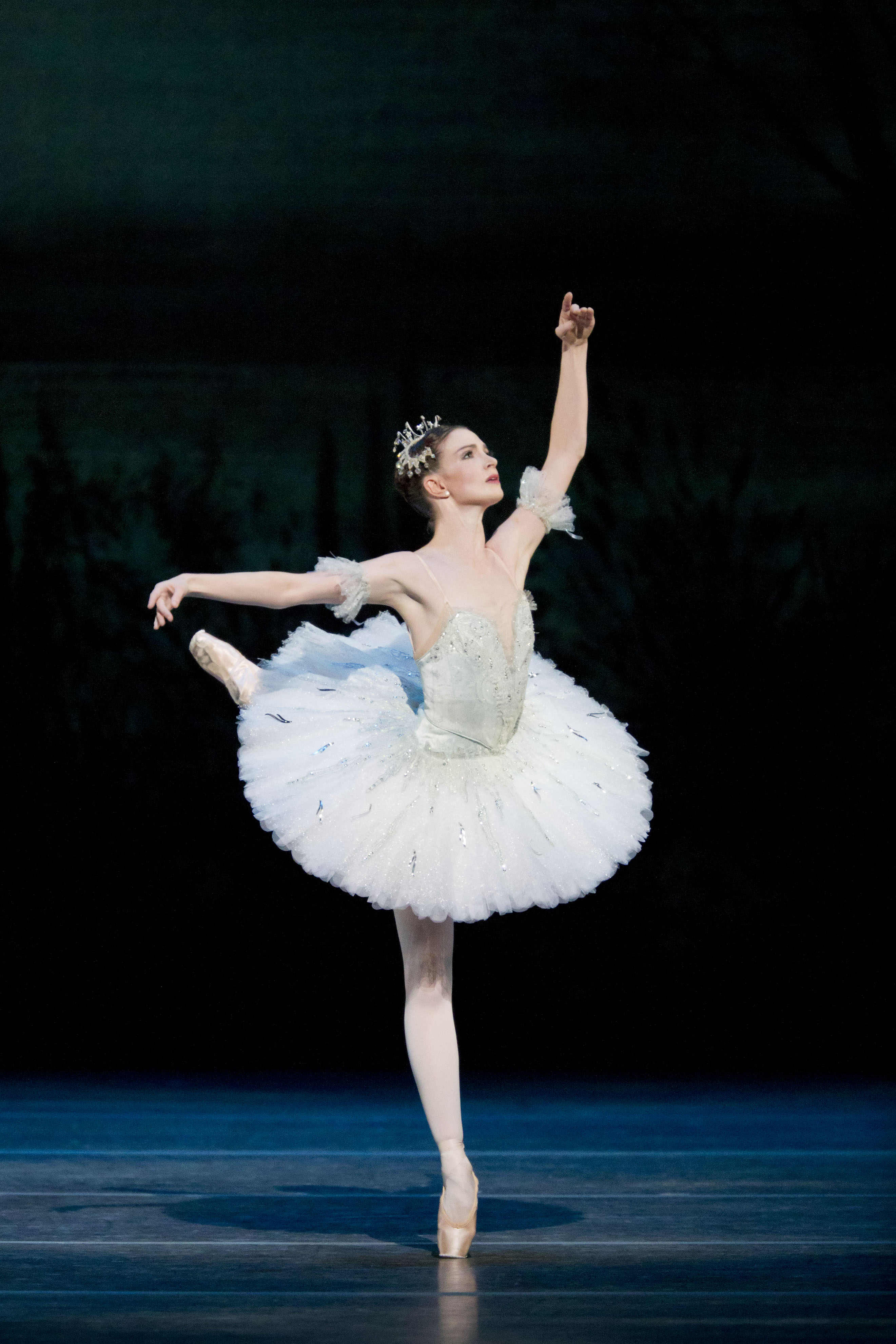The Sleeping Beauty, Royal Ballet | reviews, news & interviews
The Sleeping Beauty, Royal Ballet
The Sleeping Beauty, Royal Ballet
Lauren Cuthbertson is an Aurora to remember in this sumptuous heritage production

Clement Crisp, veteran ballet critic, once expressed his appreciation for Ashton’s Scènes de Ballet by saying that “if one had to throw ballets off the back of a sleigh, this would be the last to go.” Charming though the train of thought was that this metaphorical situation provoked (an insomniac ballet critic could muse on it for several nights), it can’t accommodate The Sleeping Beauty, which is to other ballets like the QE2 to Crisp’s sleigh.
It’s not that I don’t like Sleeping Beauty; au contraire, I love it (thanks in no small part to that superb Tchaikovsky score, which weaves narrative and danceability together into a cloth-of-gold of seamless lustre). But you have to understand its nature: it’s not any old princess story (parents take note, Disney misled you: The Sleeping Beauty is not a great first ballet for children). Since the first production in the paranoid atmosphere of late-Imperial Russia, this has been a ballet about wealth and power; the intertwining of status and the status quo. Although imaginative reworkings exist – see Ashley Page’s sassy version for Scottish Ballet, where Aurora pricks her finger on a giant phallic cactus – they will always be dominated by those Beauties closer to the centres of power, like the bling-tastic Bolshoi version toured to London last August, or the sumptuous Royal Ballet heritage production revived yesterday at Covent Garden.
 Everything about this production, a careful 2006 recreation of the seminal 1946 one which reopened the Opera House after the war, is meant to convince us that it is the definitive, the archetypal Beauty, down to (or perhaps especially) the programme notes which stridently proclaim its wonderful “Britishness” and national import. Whether its revival now, in Austerity Britain with the Scottish referendum looming, betokens anything other than the Royal Ballet’s increasingly box-office safe programming, is a question politically-minded audience members might like to ponder.
Everything about this production, a careful 2006 recreation of the seminal 1946 one which reopened the Opera House after the war, is meant to convince us that it is the definitive, the archetypal Beauty, down to (or perhaps especially) the programme notes which stridently proclaim its wonderful “Britishness” and national import. Whether its revival now, in Austerity Britain with the Scottish referendum looming, betokens anything other than the Royal Ballet’s increasingly box-office safe programming, is a question politically-minded audience members might like to ponder.
Leaving politics aside, there is plenty of wonderful artistry here, which can be enjoyed as pure escapism if you so choose. Oliver Messel’s designs are confections of architectural improbability washed over with the watercolour palette of tinted photographs (pictured above right). Few tutus in ballet combine colour, shape and decoration as well as the various fairy outfits here do; and the more theatrical costumes are decked in tastefully eye-catching glitter (any eighteenth century duchess – or Disney princess, come to that – would call her couturière immediately in a green tinge of envy on first sight of the Queen’s dress in the Prologue).
The choreography is a superb classical feast, and mostly well-executed by the company, though I hope it will be better in the rest of the run after yesterday’s first-night wobbles disappear. There were some interestingly jazzy, spiky takes on the fairy variations from Olivia Cowley and Claudia Dean (I wasn’t quite convinced), and James Hay made the fluttering Bluebird very fey with his sinuous épaulement; an impressive feat when executing grands batteries at the same time. Matthew Golding, the former Dutch National Ballet star making his first appearance with the Royal Ballet as a full-time Principal, gave a competent but uninspiring performance as the Prince; a nice enough dancer, I’ve yet to see him really light up a stage with character, though perhaps given time to settle at the Royal that will change.
 For megastar wattage last night we relied on his co-star, Lauren Cuthbertson as Princess Aurora (pictured left). The part requires a dancer to wait in her dressing room for an hour after the performance has started, then run on stage straight into the gimlet gaze of two thousand people watching for a wobble in the Rose Adagio, an apotheosis of classical choreography as well-known to even the amateur ballet-goer as Odile’s thirty-two fouettés in Swan Lake Act III, and considerably more difficult. Former Royal Ballet principal Deborah Bull has called it the “most terrifying dance in the ballet repertoire” and claimed she was “a bag of nerves” at the sound of its opening arpeggios. Well, judging from the way Lauren Cuthbertson exploded into Act II last night, she has nerves of steel, as well as utterly commanding stage presence. Her entrance, skittering in at the back with the broadest smile, was a spike of electricity to jolt the sleepy house into vibrating alertness.
For megastar wattage last night we relied on his co-star, Lauren Cuthbertson as Princess Aurora (pictured left). The part requires a dancer to wait in her dressing room for an hour after the performance has started, then run on stage straight into the gimlet gaze of two thousand people watching for a wobble in the Rose Adagio, an apotheosis of classical choreography as well-known to even the amateur ballet-goer as Odile’s thirty-two fouettés in Swan Lake Act III, and considerably more difficult. Former Royal Ballet principal Deborah Bull has called it the “most terrifying dance in the ballet repertoire” and claimed she was “a bag of nerves” at the sound of its opening arpeggios. Well, judging from the way Lauren Cuthbertson exploded into Act II last night, she has nerves of steel, as well as utterly commanding stage presence. Her entrance, skittering in at the back with the broadest smile, was a spike of electricity to jolt the sleepy house into vibrating alertness.
Radiating confidence and artistry, Cuthbertson (aided by Sergey Levitin, whose rich tonality painted the violin solos with depth and colour) gave us a masterclass in the magnificence of Petipa’s choreography and Tchaikovsky’s music. Her poised arabesques and collected pirouettes showed us Aurora as dignified, the demure princess, but then Cuthbertson reminded us with her attack on those huge side developpés, and the near cadenza-like flair of her petit allegro variation, that this is a Crown Princess with the full majesty of divine-right rule and dynastic wealth behind her. The package was regal, and dazzling – much like the production whose crowning glory it was.
- The Sleeping Beauty is at the Royal Opera House until April 9
rating
Buy
Explore topics
Share this article
more Dance
 MacMillan Celebrated, Royal Ballet review - out of mothballs, three vintage works to marvel at
Less-known pieces spanning the career of a great choreographer underline his greatness
MacMillan Celebrated, Royal Ballet review - out of mothballs, three vintage works to marvel at
Less-known pieces spanning the career of a great choreographer underline his greatness
 Carmen, English National Ballet review - lots of energy, even violence, but nothing new to say
Johan Inger's take on Carmen tries but fails to make a point about male violence
Carmen, English National Ballet review - lots of energy, even violence, but nothing new to say
Johan Inger's take on Carmen tries but fails to make a point about male violence
 WAKE, National Stadium, Dublin review - a rainbow river of dance, song, and so much else
THISISPOPBABY serves up a joyous tapestry of Ireland contemporary and traditional
WAKE, National Stadium, Dublin review - a rainbow river of dance, song, and so much else
THISISPOPBABY serves up a joyous tapestry of Ireland contemporary and traditional
 Swan Lake, Royal Ballet review - grand, eloquent, superb
Liam Scarlett's fine refashioning returns for a third season, and looks better than ever
Swan Lake, Royal Ballet review - grand, eloquent, superb
Liam Scarlett's fine refashioning returns for a third season, and looks better than ever
 First Person: Ten Years On - Flamenco guitarist Paco Peña pays tribute to his friend, the late, great Paco de Lucía
On the 10th anniversary of his death, memories of the prodigious musician who broadened the reach of flamenco into jazz and beyond
First Person: Ten Years On - Flamenco guitarist Paco Peña pays tribute to his friend, the late, great Paco de Lucía
On the 10th anniversary of his death, memories of the prodigious musician who broadened the reach of flamenco into jazz and beyond
 Dance for Ukraine Gala, London Palladium review - a second rich helping of international dancers
Ivan Putrov's latest gala was a satisfying mix of stars and young hopefuls
Dance for Ukraine Gala, London Palladium review - a second rich helping of international dancers
Ivan Putrov's latest gala was a satisfying mix of stars and young hopefuls
 Nelken: A Piece by Pina Bausch, Sadler's Wells review - welcome return for an indelible classic
A new generation of gifted performers for us to get to know
Nelken: A Piece by Pina Bausch, Sadler's Wells review - welcome return for an indelible classic
A new generation of gifted performers for us to get to know
 Dark With Excessive Bright, Royal Ballet review - a close encounter with dancers stripped bare
The Royal's Festival of New Choreography launches with an unforgettable walk in the dark
Dark With Excessive Bright, Royal Ballet review - a close encounter with dancers stripped bare
The Royal's Festival of New Choreography launches with an unforgettable walk in the dark
 La Strada, Sadler's Wells review - a long and bumpy road
Even the exceptional talents of Alina Cojocaru can't save dance adaptation of Fellini film
La Strada, Sadler's Wells review - a long and bumpy road
Even the exceptional talents of Alina Cojocaru can't save dance adaptation of Fellini film
 First Person: pioneering juggler Sean Gandini reflects on how the spirit of Pina Bausch has infiltrated his work
As Tanztheater Wuppertal Pina Bausch's 'Nelken' comes to Sadler’s Wells, a tribute from across the art forms
First Person: pioneering juggler Sean Gandini reflects on how the spirit of Pina Bausch has infiltrated his work
As Tanztheater Wuppertal Pina Bausch's 'Nelken' comes to Sadler’s Wells, a tribute from across the art forms
 Manon, Royal Ballet review - a glorious half-century revival of a modern classic
Fifty years on, Kenneth MacMillan's crash-and-burn anti-heroine is riding high
Manon, Royal Ballet review - a glorious half-century revival of a modern classic
Fifty years on, Kenneth MacMillan's crash-and-burn anti-heroine is riding high
 Giselle, English National Ballet, Coliseum review - if you go down to the woods today, beware of the Wilis
A revival of Mary Skeaping's lovingly researched production, packed with lively detail and terrific suspense
Giselle, English National Ballet, Coliseum review - if you go down to the woods today, beware of the Wilis
A revival of Mary Skeaping's lovingly researched production, packed with lively detail and terrific suspense

Add comment